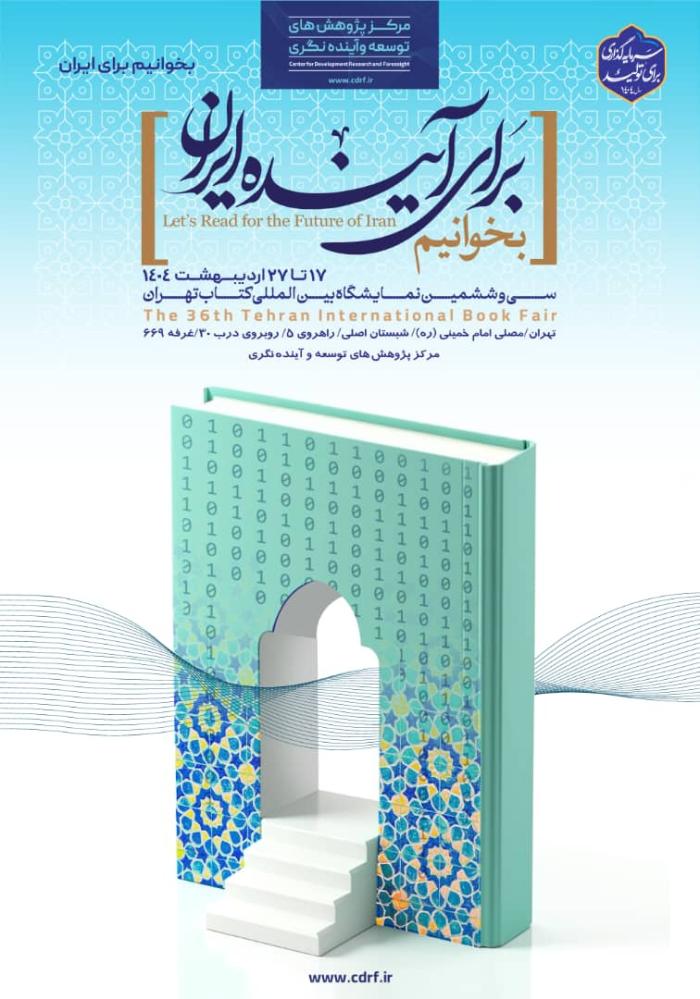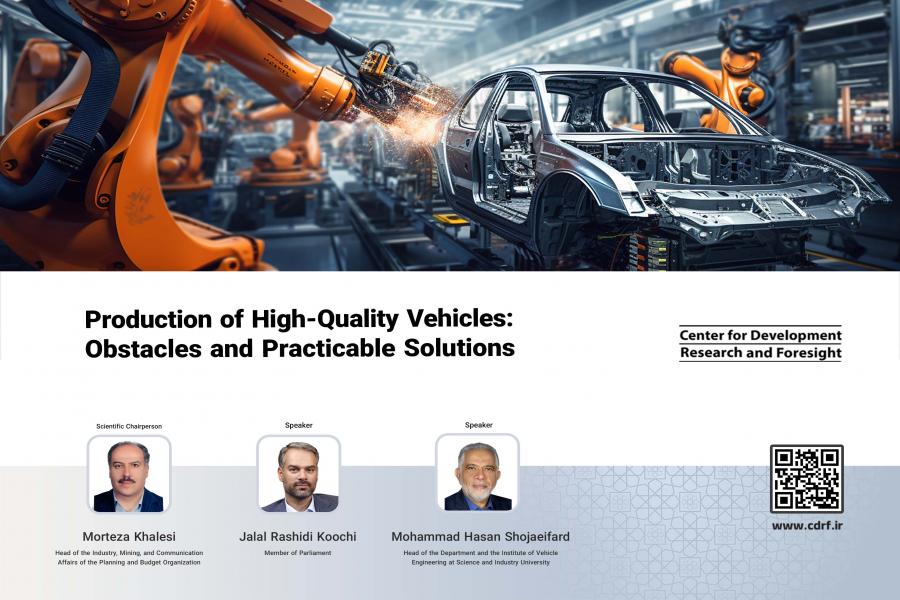

-
بررسی آییننامهها و دستورالعملهای برنامه هفتم پیشرفت
-
بررسی عوامل موثر بر افزایش تصادفات و تلفات جادهای و سوانح رانندگی و دادهکاوی تلفات انسانی
-
سازماندهی و بازآرایی فضایی آموزش عالی کشور
-
به روز رسانی سند ملی آمایش سرزمین
-
انجام مطالعات مناطق آزاد به عنوان نواحی پیشران اقتصادی کشور
-
اصلاح ساختار بودجه و پیاده سازی نظام یکپارچه مدیریت اطلاعات مالی دولت (IFMIS)

In the conference at the Center for Development Research and Foresight it is declared that while Iran's auto industry is roaring back to life, its path to success is far from smooth. With a mix of challenges and opportunities, the country's carmakers are navigating a complex landscape of sanctions, government control, and a growing demand for mobility.
Once dominated by a handful of state-owned companies churning out clunky, outdated vehicles, the Iranian auto industry is now seeing a shift towards private investment and cutting-edge technology. But the scars of the past remain. Years of sanctions have hampered access to vital parts and technology, leaving Iranian cars struggling to compete with their foreign counterparts in terms of quality and features.
"The sanctions have definitely had a big impact," said Shojaeefard, a professor at the Science and Industry University of Iran. It's been difficult for Iranian carmakers to import the latest technology and components, which has limited their ability to innovate and improve their products, Shojaeefard stated.
Despite the challenges, there are signs of hope. The Iranian government has started offering incentives to attract foreign investment and encourage domestic carmakers to embrace new technologies. The growing demand for cars in Iran, fueled by a rising population and increasing incomes, is also a major boost for the industry.
"The Iranian market is huge, with over 80 million people," said Koochi, Iranian MP. There's a lot of potential for growth, especially if Iranian carmakers can improve the quality of their products and offer them at competitive prices, he said.
One of the biggest opportunities for Iran's auto industry lies in the development of electric vehicles (EVs). With global oil prices on the rise and concerns about climate change mounting, EVs are becoming increasingly popular around the world.
Iran has the potential to become a major player in the EV market, thanks to its abundant reserves of lithium and other minerals needed for battery production. The government is already investing heavily in EV research and development, and several Iranian carmakers have unveiled their own EV prototypes.
"The future of the Iranian auto industry is electric," said Shojaeefard. If Iran can capitalize on its resources and develop a strong EV industry, it could become a major exporter of these vehicles in the future, he said.
The road ahead for Iran's auto industry is far from certain. But with a combination of government support, private investment, and a focus on innovation, the country's carmakers could soon be shifting gears and driving towards a bright future.



